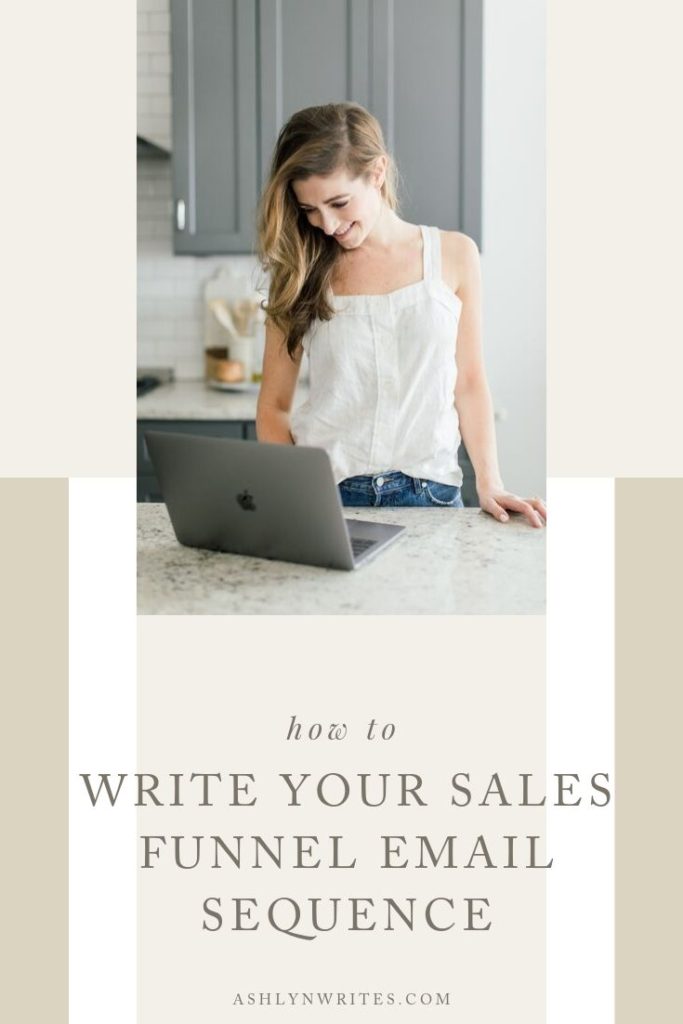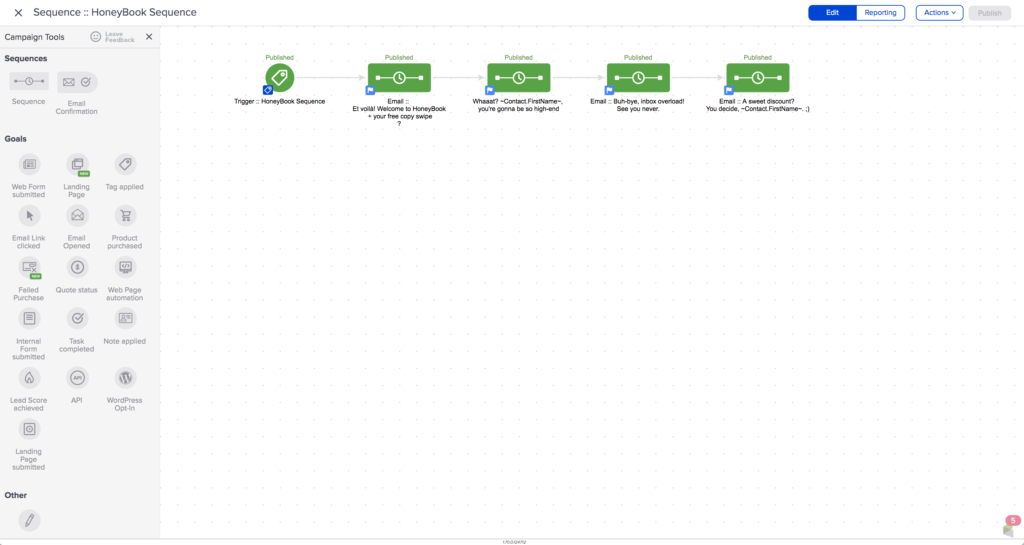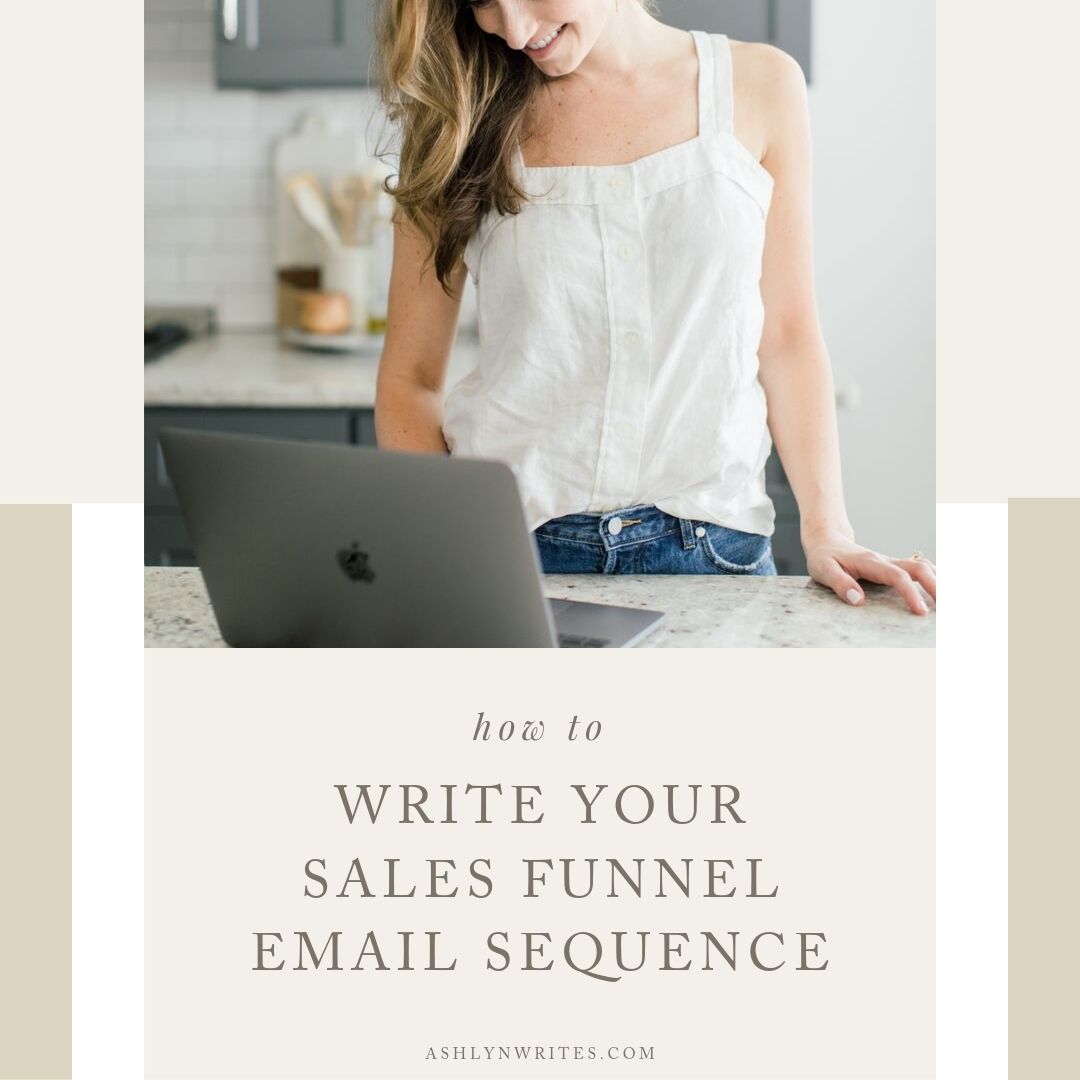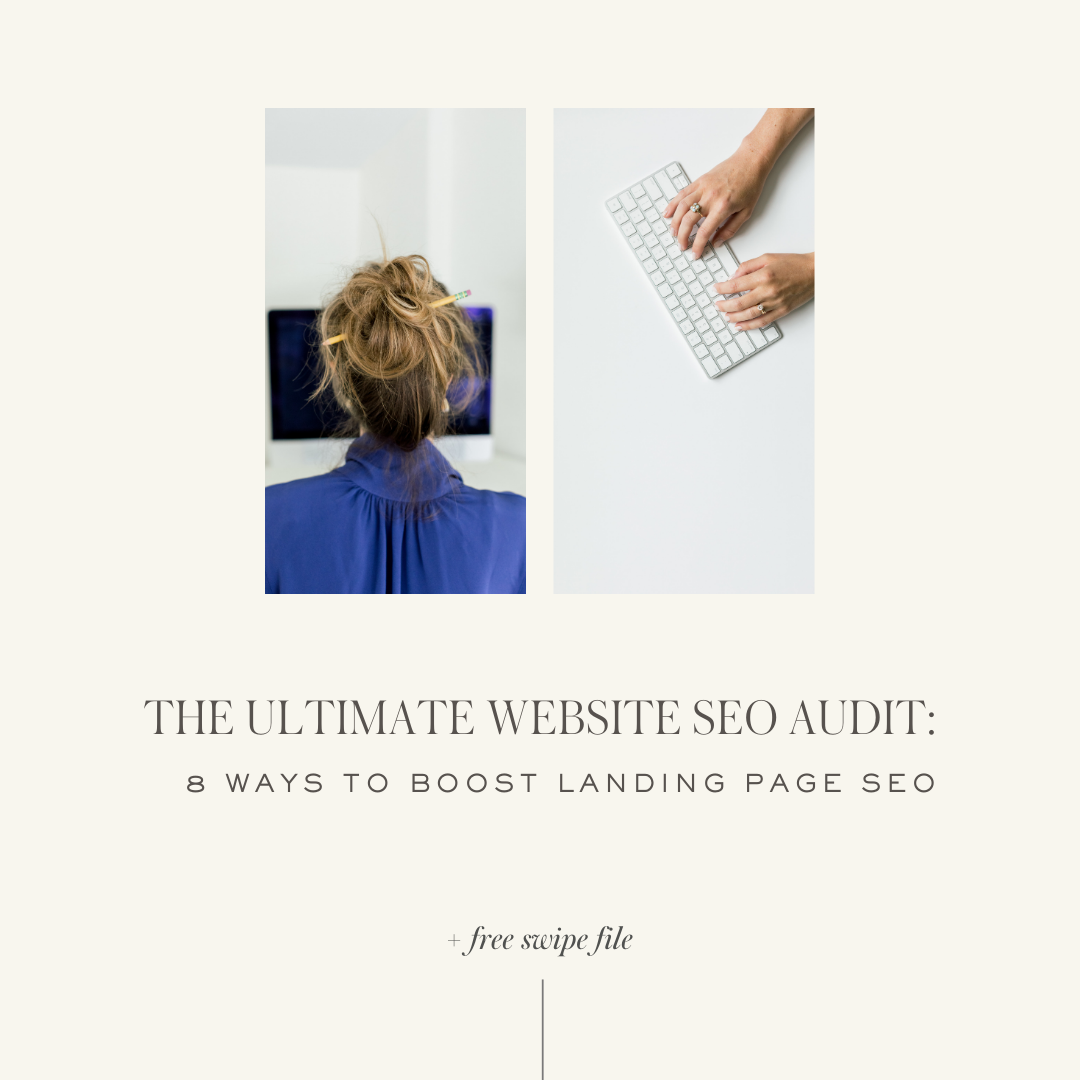I’m currently in the process of optimizing a client’s evergreen funnels, and after writing hundreds, and hundreds of pages of email marketing copy for clients since I started writing email copy in the corporate world way back in 2011, I know what it takes to get emails to turn into clicks. I this post I am walking you through how I made $5,200 in 9 weeks using my sales funnel template.

And recently—in a classic example of “cobbler’s kids have no shoes”—I decided to take a look at my own evergreen funnels and I found some real “areas of opportunity.” Wink. So … How did I increase conversions for a product—spoiler: an affiliate program—by 44% with a few simple tweaks?
Over on my Youtube channel, I’m teaching the exact process I used … yup, you read that right.
I love email marketing, I love writing emails, I love reading emails—whether it’s in my Unroll.me condensed digest or just emails from brands I don’t want to miss—so whether you’ve got tons of funnels and products in your business, or you’re just getting started with creating that email marketing account—my latest video is for you.
First things first, to give you a quick sketch of the conversion increase, this wasn’t the biggest win I’ve ever had. Instead, I wanted to pick a quick-and-dirty project that would literally take me an hour to do, so hopefully, you can see how simple this could be if you become a better copywriter for your creative business.
Okay, so I took a product that I was getting a fairly steady affiliate payout fee for—over a period of 3 years, it grossed $12,600.
I started in May of 2016.
But I wanted to see if it could make more.
So this is the story all about how … I wrote a 5-part email funnel in one hour that increased my Honeybook affiliate sales by 44%—and made 41% of the entire program payout to date—in just 9 weeks, bringing in an extra $5,200, taking my 3ish year gross payout up to $18,200 … again, just for a product, I LOVE, and affiliate for and get a modest $50 kick-back from.
Now that I’ve done this, I for sure want to do the same thing for other affiliate programs in my business. I have a golden rule that I never affiliate for something I don’t use. If I talk about an affiliate program, it’s because I use it.
HoneyBook is the tool I use for every.single.client, whether it’s a day rate or a massive 5-figure launch project that takes 83 hours of my time.
Let’s go.
I use an email marketing system called Infusionsoft. (Now, I LOVE Convertkit for email marketing and getting started with funnels—in fact, I still recommend that you use CK up to 20,000 subscribers—and you could even go way up after that.) I just tend to be really into funnels and it was easier to move to a platform where a contractor on my team, Danielle, could help me stay organized.
In the video, I let you take a peek over my shoulder at my computer and look at this exact email funnel. (Video: 5:03min)
So you can see an overview of the funnel itself, how many emails it actually took to see some lift on this product, and about the timing of it.
It’s all—like a good evergreen email funnel—scheduled to send for that client or customer based on when they sign up, which takes it off anyone’s plate.
If you opened up an email, of course, the copy is loaded in there, and I’ll dive into the drafting of it in a second, but that’s the tool I recommend. ConvertKit, or if you’ve got a lot of funnels going on in your business and perhaps someone techy on hand that can be an Infusionsoft go-between, Infusionsoft.
Also, if you download the freebie linked below, you can sneak a peek at a recommended funnel map for an affiliate program.
Stay Out of the Platform Itself
So part of any copywriting job I do for my own business or for clients is done in phases—my CfC students know this, but I NEVER write in the platform itself.
That helps me stay focused on one task, the copy. Even at my stage of copywriting, Just last week I did this for a client …
I don’t whip open an Infusionsoft or Showit or whatever and start typing. Never. I start in a fresh, clean Google doc.
That’s something I learned in my first agency marketing job—it’s how we had to submit copy to the client, but it made me way more efficient to just be staring at black and white words on the screen, rather than trying to wireframe the whole thing.
So if you’re just getting started writing copy for your business, remember that—you don’t need to be writing in Showit or Squarespace or ConvertKit or Mailchimp—a blank doc will work just fine.
I want you to imagine my voice saying, “Start with a blank page!” next time you have to write copy for your business’s website or email marketing.
So, let’s keep going.
The next thing I did was write the copy.
Now, yes, I’ve got this down to a science. I’m constantly researching my audience and listening to how they say things, combining that with what I want to say, so writing the emails themselves didn’t take me all that long. About 45 minutes. Everything I tell you to do—like organize your research—I do myself. So when it comes to writing copy and looking at research or data mining, it’s pretty dialed in, and I can wrap a project like this pretty quick because of the way things are set up.
Another thing I considered here is what I’ve heard people saying they need with regard to client experience, which is what Honeybook helps with. This creates that ideal, “HOW DID SHE KNOW?!” reaction from my friends in the mini-funnel. I’m helping solve a problem for them!
My students will recognize this as how I teach client or customer voice hacking, so here, I went back in and—since I was writing about client experience—saw what I had that my people had said there.
I also knew the top-of-funnel point for this—for people that are interested in joining HoneyBook with my affiliate code, I really want to hold their hand through the process. I’ve seen that offering a sample page from the client magazine I used in my business for years was a good incentive, so I included it in the funnel.
Okay, next—I wanted to update the funnel and capitalize on content I had already created that may have never been seen by this particular audience. So, I went behind the scenes and looked inside my YouTube analytics, and I remembered—ah, yes, this video had to do with client experience, it performed well, perhaps it would help these people.
So I’ll flesh out the mini-sequence map with the copy pulled from the video itself, and move along.
Finally, I prepped the sequence for editing and loaded it in.
Now, obviously this is something I wished I’d done with this affiliate program right when I joined back in 2016. (I clearly left SO much money on the table by just talking about this product and putting the link out there—but never building a mini-sequence for it, ahem, what I do best. Ugh, duh Ashlyn!) So if you’re an entrepreneur and have a product you maybe could add into a micro-funnel (I’m talking like, 5-7 emails MAX), I would say consider going ahead and doing it.
Next up, I usually send copy like this along to Sarah in my business who reads everything I write for copy editing. (You need to have an editing process for your funnel.) She has my brand voice guide on lock, so she makes sure I’ve used the right writing standards for this piece of copy.
Ok, sidebar: When you have a brand voice guide for your business at the ready (And this is one of the things we teach our students inside Copywriting for Creatives, how to build this out for your own business) whether you’re writing this or someone else is, you have a gut check guide to make sure everything is appropriately written. It becomes a plug-and-play tool to house snippets that are on brand and on voice for you. If you have a Copy Bank, (again, another system I teach inside my CfC program) this is where you’d want to pull that out and swap out or add in any phrases you’re dying to use.
(Pro tip: if you’re a copywriter, I would consider paying to get someone else to do this for you. That’s what I did 3 years into my business when I really started growing my team—it’s like I couldn’t see the back of my hair, and my friend Justin really helped me figure that out. If you are a creative entrepreneur, you can absolutely create a Brand Messaging Style Guide yourself. )
And there it is, so you can see the funnel all loaded in.

So right now, we’re looking at an increase of $5,200 in sales in just 9 weeks for an affiliate program I don’t send any paid traffic to or spend any money on ads. I just have the affiliate link in blogs and YouTube videos.
Everything I talk about in this post (and this YouTube video) is exactly what went into the funnel to see more than $5k more in sales in under 10 weeks with a 5-part mini-sequence I wrote in 45 min.
A few other things to consider? Remember, most copywriting projects are mostly research and gathering information than anything else. You’ll get faster and more organized over time, and you’ll understand better how to be a jam-up DIY copywriter, which is a key to your success. Plus, with email funnels like this one put in place to earn you dollahs behind the scenes, you can actually afford to hire out when it comes to the bigger needs in your business, like a huge website rebrand after you’ve been in business, a sales page, or a launch copy project.
And, that’s all folks. Now it’s your turn to try it out. Go tackle a mini-funnel for your biz, and let me know how it goes!
PLUS – if you’re looking for more tips like this, be sure to subscribe to my YouTube channel. And if you really want more support on figuring out how to organize that research that I mentioned, be sure to watch my last video where I take you through ninja tips on how to organize that to write better copy.
Reading Time: 7 Minutes Reading time: 7 min. I’m currently in the process of optimizing a client’s evergreen funnels, and after writing hundreds, and hundreds of pages of email marketing copy for clients since I started writing email copy in the corporate world way back in 2011, I know what it takes to get emails to turn into clicks. […]




Hi Ashlyn!
Thanks so much for this! Quick clarification though…
When do people get put into the funnel? Is it when they sign up for the free trial of the affiliate in which case the funnel is meant to encourage them to sign up for the full plan? Or is it when they opt-in to another one of your freebies that’s related to the affiliate product?
Thanks!
Mary
So good, Mary! Aight—so they sign up for a free trial of the plan, and that’s when the funnel triggers. I do NOT have it teed up to a freebie related to the product, and that was a big learning for me with this. Now seeing this, I realize there are way too many mini-sequence opportunities that I’m not using a bit, and they’d be GREAT for it. You bring up one right here I want to do! Tie in a related freebie to the opt-in, instead of JUST the free product sample itself.